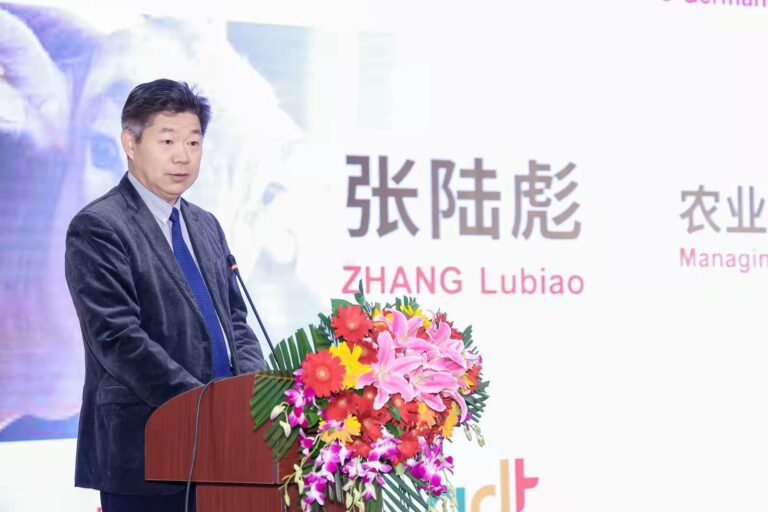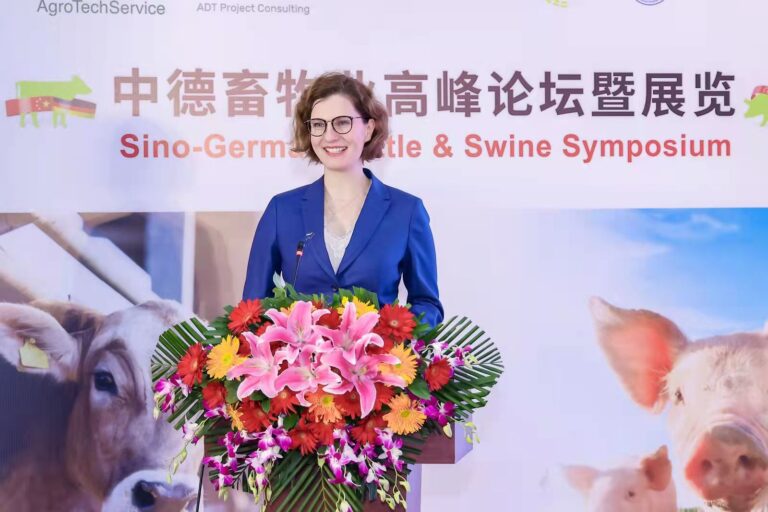On 25 and 26 November DCZ experts Eva Sternfeld and Michaela Boehme attended the Sino-German Cattle & Swine Symposium in Beijing. Organized by the German Agricultural Society (DLG) and our associated partner – the Sino-German Cooperation Project for Sustainable Animal Breeding and Husbandry – the high-level event brought together Chinese and German stakeholders in the cattle and pig sector to discuss current challenges and joint opportunities for future development.

Both sectors are facing significant challenges, the event made clear. These include low prices, rising costs for feed and energy, and rapid structural change leading to fewer but bigger farms. Producers also need to respond to ever more societal demands for meat quality, safety, and, in the case of Germany, animal welfare – demands, which consumers are not necessarily prepared to pay for, as Sven Häuser from DLG explained.
Limited growth potential is yet another challenge. In China, the pork sector may well have peaked, WANG Aiguo from China Agricultural University noted in his presentation. A similar picture emerges in Germany, where meat consumption is already declining.
To overcome these challenges, industry stakeholders look towards improvements in breeding. For cattle, dual-purpose breeds that can be used for both meat and milk production may help to make farms more resilient to price volatility, WANG Yachun from China Agricultural University told the audience in her presentation on the status quo of cattle breeding in China. In Germany, farmers have accumulated many positive experiences using Fleckvieh cattle, a dual-purpose breed particularly popular in the Southern federal state of Bavaria. Breeders now also include other criteria such as longevity and robustness into their breeding plans, pig breeder Albrecht Weber from German Genetic emphasized.
Digital technologies also received much attention throughout the event. By measuring breeding performance, animal well-being, or feed conversion rates, digital tools will become indispensable in managing livestock more efficiently and reduce costs, speakers agreed. For example, a smart collar attached to calves can help farmers monitor their steps, food and water intake, as well as daily behavior, identifying sick animals and treat them early before they develop severe symptoms or put other animals at risk, Thomas Förster from Förster Technik explained.
Participants also discussed new strategies for livestock feeding. Animal feed is not only a major cost factor in livestock farming, but also influences the production of greenhouse gases in ruminants and the quality of the meat. By scientifically adjusting feed formulations and better measuring individual feed intake and conversion rate, feed efficiency can be optimized. Speakers also stressed the need to reuse manure and other waste from livestock farming – both to close nutrient cycles and to valorize products formerly though of as “waste”, e.g., by investing in a biogas plant.
Biosecurity management was highlighted as another important area where the livestock sector has room for improvement. Participants agreed that African Swine Fever and other infectious diseases pose a challenge to livestock farms all around the globe. Here, a mix of measures including better veterinary services, vaccines, and strict hygiene rules for animals and workers can help minimize risks, experiences from several farms in Germany and China demonstrated.









